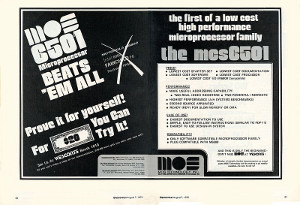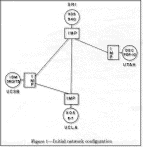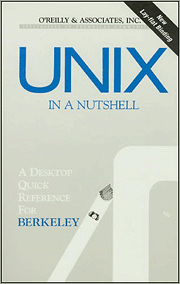 Linus Torvalds was born in 1969 in Helsinki, Finland. He attended the University of Helsinki and graduated in 1996 with a degree in computer science. In the early 90s he discovered the Minix demo, a Unix based operating system, and was inspired to create his own. While attending the university, he wrote it on his own time using his own resources and later released it to a newsgroup in September of 1991 after a friend made it available on an FTP server. The result was an open source operating system project that has spawned several different flavors of the system and code. Today, Linux is gaining ground in the desktop market, and is also a front runner in high end enterprise systems. Torvalds’ contribution of the kernel is credited with single handedly completing the GNU project’s goal of a free, Unix based operating system.
Linus Torvalds was born in 1969 in Helsinki, Finland. He attended the University of Helsinki and graduated in 1996 with a degree in computer science. In the early 90s he discovered the Minix demo, a Unix based operating system, and was inspired to create his own. While attending the university, he wrote it on his own time using his own resources and later released it to a newsgroup in September of 1991 after a friend made it available on an FTP server. The result was an open source operating system project that has spawned several different flavors of the system and code. Today, Linux is gaining ground in the desktop market, and is also a front runner in high end enterprise systems. Torvalds’ contribution of the kernel is credited with single handedly completing the GNU project’s goal of a free, Unix based operating system.
Category Archives: 1969
AMD
![]() Founded in 1969 and based in Sunnyvale, California, AMD is a global supplier of integrated circuits for the personal and networked computer/communications markets with facilities in the United States, Europe, and Asia. AMD produces microprocessors, Flash memory devices, and silicon solutions for communications and networking.
Founded in 1969 and based in Sunnyvale, California, AMD is a global supplier of integrated circuits for the personal and networked computer/communications markets with facilities in the United States, Europe, and Asia. AMD produces microprocessors, Flash memory devices, and silicon solutions for communications and networking.
MOS Technology
 Begun in 1969 by Allen-Bradley, MOS Technology originally was a supplier for Atari, but in 1975 they joined with ex-Motorola engineers to design and build low cost CPUs that performed better than leading CPUs like the Motorola 6800. The first MOS chip, the 6501, was four times faster than the 6800 thanks to it’s simpler design. Using an innovative way to reduce the errors in their manufacturing process, they were able to build the CPU at a much lower cost with a success rate of 70% or more.
Begun in 1969 by Allen-Bradley, MOS Technology originally was a supplier for Atari, but in 1975 they joined with ex-Motorola engineers to design and build low cost CPUs that performed better than leading CPUs like the Motorola 6800. The first MOS chip, the 6501, was four times faster than the 6800 thanks to it’s simpler design. Using an innovative way to reduce the errors in their manufacturing process, they were able to build the CPU at a much lower cost with a success rate of 70% or more.
Motorola sued MOS and effectively stopped sales of the 6501, but MOS released the 1 Mhz 6502 in September at the astounding price of $25. It was essentially the 6501 but with a different pin-out, and Motorola was not able to stop sales. Outperforming the 6800 and the Intel 8088, it eclipsed Motorola later and both companies reduced the price of their own chips to compete. Eventually the 6501 became one of the most popular chips on the market and a number of models were produced up to the 6507. The company continued to produce numerous chips and were bought by Commodore Business Machines after the collapse of the calculator market by Texas Instruments. MOS operated under the same name for several years even after being purchased outright by CBM. This merger eventually led to Commodore’s successful line of personal computers, but CBM went bankrupt in 1994. Although CBM had purchased the company, CPUs were produced with the MOS label stamped on them until 1989.
Interface Message Processor
 The Interface Message Processor (or IMP), was essentially the first router, as routers would eventually become known. It was the first device built with the purpose of switching packets across a network and was intended for use with the ARPANET. It was created by BBN in the early 1960s using a Honeywell 516 minicomputer with special interfaces and software. Later the Honeywell 316 was used.
The Interface Message Processor (or IMP), was essentially the first router, as routers would eventually become known. It was the first device built with the purpose of switching packets across a network and was intended for use with the ARPANET. It was created by BBN in the early 1960s using a Honeywell 516 minicomputer with special interfaces and software. Later the Honeywell 316 was used.
The first IMP arrived at UCLA on Aug. 30th, 1969 and was connected to an SDS Sigma-7 computer. The second IMP was delivered to the Stanford Research Institute on Oct. 1st, 1969 and attached to an SDS-940. On Oct.29th, the first communication between the two systems took place. IMPs connected the ARPANET until it was decommissioned in 1989, with the last one shut down at the University of Maryland.
IMPs were the grandfathers of today’s network devices such as routers and switches, which carry network traffic to their destinations across the internet and networks. They were the first generation of gateways to interconnect the different networks connected to the ARPANET. Without such pioneers as BBN and ARPA, the internet as we know it today would not exist.
ARPANET
 The precursor to the Internet, ARPANET was a large wide-area network created by the United States Defense Advanced Research Projects Agency. Established in 1969, ARPANET served as a testbed for new networking technologies, linking many universities and research centers. The first two nodes that formed the ARPANET were UCLA and the Stanford Research Institute, followed shortly thereafter by the University of Utah.
The precursor to the Internet, ARPANET was a large wide-area network created by the United States Defense Advanced Research Projects Agency. Established in 1969, ARPANET served as a testbed for new networking technologies, linking many universities and research centers. The first two nodes that formed the ARPANET were UCLA and the Stanford Research Institute, followed shortly thereafter by the University of Utah.
Larry Roberts and Bob Taylor are primarily responsible for the project when Taylor, then head of computing programs at ARPA, starts the ball rolling for the creation of a national computer network. He shared predecessor J.C.R. Licklider’s view, and moves forward with a plan for creating a network of electronic links among the computers at various research centers.
He hires Larry Roberts to head the project and three years later ARPANet is born. The network would rely on Robert’s theory on machines called Interface Message Processor (IMPs), which would connect, route messages, scan for errors and confirm arrival. After hundreds of proposals, the contract to build them goes to Bolt, Beranek and Newman (BBN). They work around the clock to deliver the first one by the Labor Day 1969 deadline. Requests for assistance goes out to the “Intergalactic Network”, and the response is overwhelming as mostly graduate students prepare their host computers for IMPs.
Linked by dedicated phone lines, all of the first four IMPs are in place on schedule and allow users to log on to remote computers and run their programs. This four node preliminary trial is successful, and by spring of 1971 nineteen other sites across the country have joined. The next year the network makes it’s public appearance and the idea of a more expansive network takes root. Others are involved in ARPAnet’s design and completion, and they develop new protocols, write software, connect wires, and unknowingly start the network revolution.
UNIX
 From Lucent Technologies’ “Creation of the UNIX Operating System”
From Lucent Technologies’ “Creation of the UNIX Operating System”
After three decades of use, the UNIX computer operating system from Bell Labs is still regarded as one of the most powerful, versatile, and flexible operating systems (OS) in the computer world. Its popularity is due to many factors, including its ability to run a wide variety of machines, from micros to supercomputers, and its portability — all of which led to its adoption by many manufacturers.
Like another legendary creature whose name also ends in ‘x,’ UNIX rose from the ashes of a multi-organizational effort in the early 1960s to develop a dependable timesharing operating system. The joint effort was not successful, but a few survivors from Bell Labs tried again, and what followed was a system that offers its users a work environment that has been described as “of unusual simplicity, power, and elegance….”
The system also fostered a distinctive approach to software design — solving a problem by interconnecting simpler tools, rather than creating large monolithic application programs. Its development and evolution led to a new philosophy of computing, and it has been a never-ending source of both challenges and joy to programmers around the world.
Stanford Arm
 This robot arm was designed in 1969 by Victor Scheinman, a Mechanical Engineering student working in the Stanford Artificial Intelligence Lab (SAIL).
This robot arm was designed in 1969 by Victor Scheinman, a Mechanical Engineering student working in the Stanford Artificial Intelligence Lab (SAIL).
This 6 degree of freedom (6-dof) all-electric mechanical manipulator was one of the first “robots” designed exclusively for computer control. Following experience with a couple of earlier manipulators, the Stanford-Rancho Arm (a modified prosthetic arm) and the Stanford Hydraulic Arm (a high speed but dangerous and difficult to control manipulator), this arm was designed to be easy to control and compatible with the existing computer systems (PDP-6) and the SAIL facility. This arm was entirely built on campus, primarily using shop facilities in the Chemistry Department.
